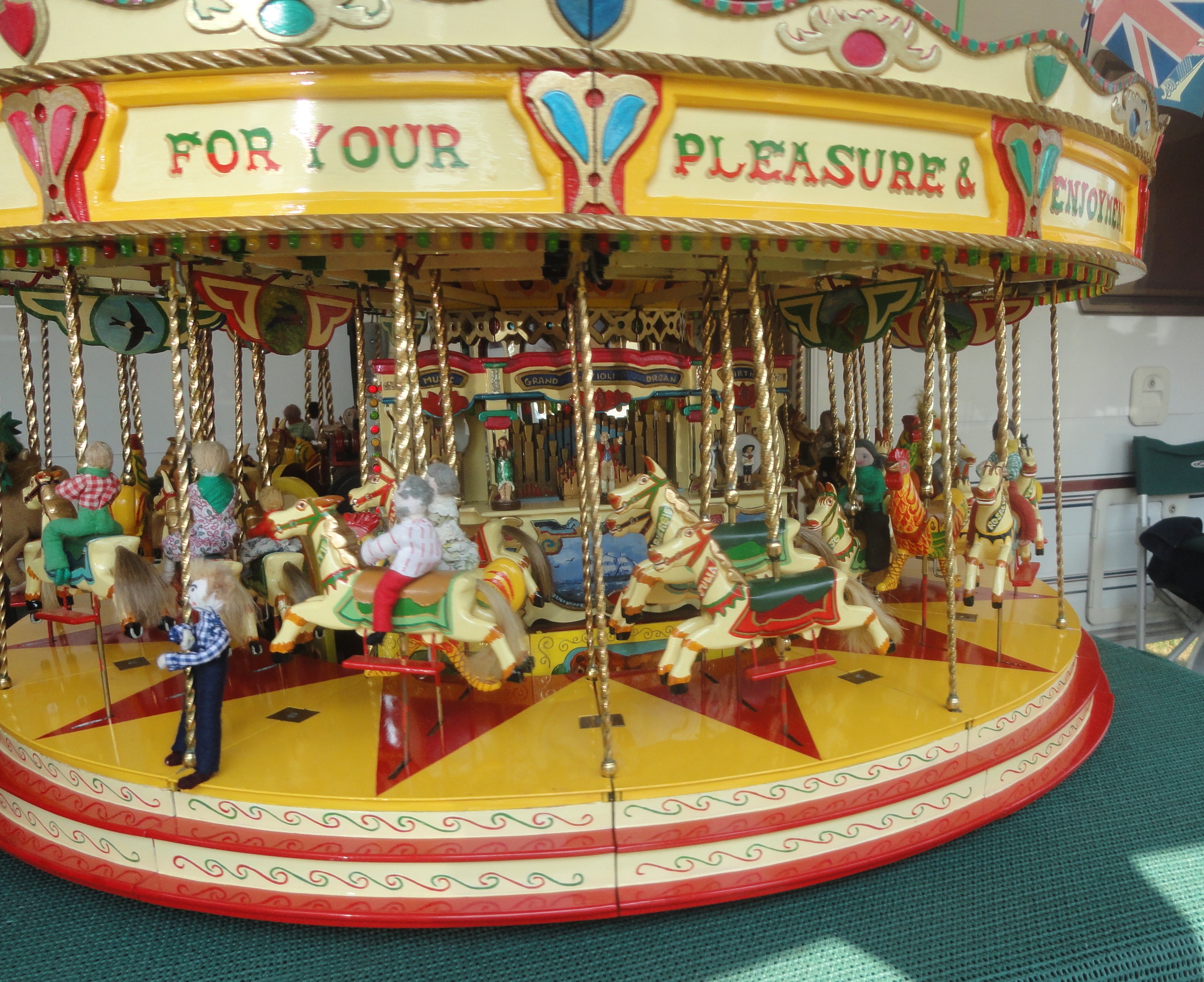
In Santa Fe, New Mexico, there is a chapel. It once belonged to a Catholic girls' school. It was built as a half model of another chapel in France, but after it was being built, they realized a half-sized stairway wouldn't work.
Mystery and adventure ensued.
There is much history, physics, artistry and varied purposes in such things.
Toy soldiers were quite the rage in England at one time. That led to kids who knew military tactics as well as some kids know their favorite video games now. That led to lead, though—lead based paints on lead figurines, and there's some biochemistry involved that they didn't know about yet in those days.
(Some were tin, and now they're other metals, or plastic.)
Follow those trails, and things you didn't know were even out there will connect to things that are already in your own knowledge and experience.
Connections
photo by Sandra Dodd, of a detailed miniature carousel
If you click the image above, you can see my other photos from my visit to
Hollycombe Steam Collection, on their music box day, in 2013. There were collectors of mechanical music devices, and of miniature fair rides.
This is a first run of a trick Vlad Gurdiga has arranged for my site to do—a tool for using folders as slide shows. Vlad's pretty great. For me, the photos loaded quickly on my MacBook, semi-quickly on an iPad, and a subset of them loaded, after a while, on my iPhone.
The first photos are pub lunch in Liphook, animals on the property near the car park, some of Hollycombe's collection of wagons that travelling-fair workers used to live in, and of various things inside the park.






